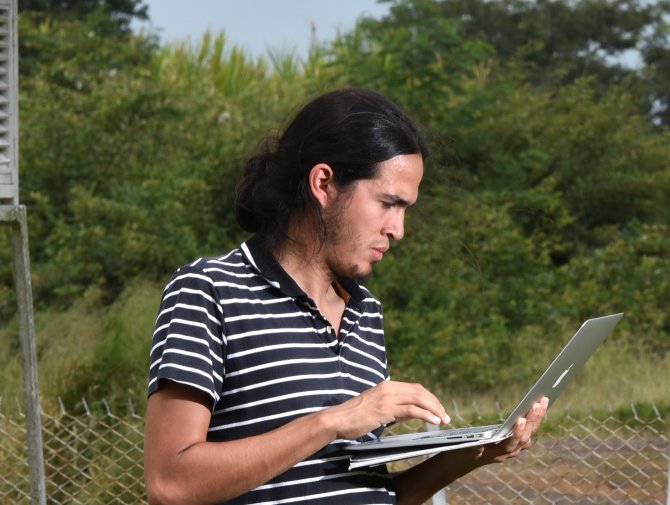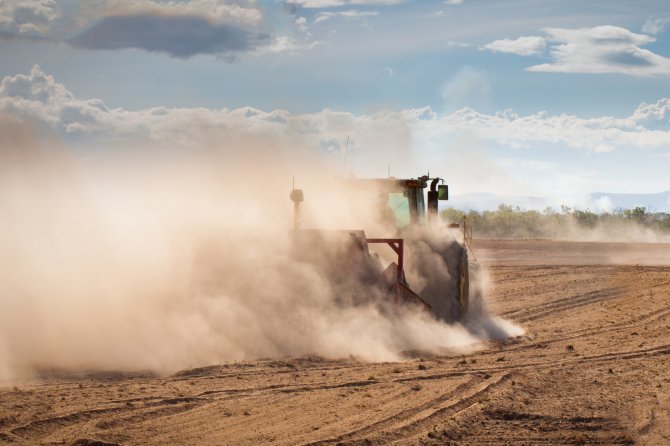
News
Insufficient knowledge on climate impact on agriculture
How will climate change impact global food production, and how can governments and farmers adapt and mitigate those effects? These are the important questions prof. dr. Julian Ramirez-Villegas will tackle as special professor, in a collaboration between Wageningen University & Research and CGIAR. He will hold his inaugural lecture on 10 March.
The global temperature is rising and will continue to rise, even according to the most optimistic estimates. The alarming report by the IPCC shows that, already, at the current warming rates, climate change accounts for weather extremes like droughts and heat waves. “This is a reality,” says prof. dr. Julian Ramirez-Villegas. “And we still know too little about how global food systems need to adapt.” As Special Chair Agriculture Climate Impacts and Adaptation, professor Ramirez-Villegas will research what challenges farmers stand to face in a changing climate, and what solutions are available to feed the world.
The Special Chair is the result of a collaboration between Wageningen University & Research (WUR),the Alliance of Bioversity International and the International Centre for Tropical Agriculture (CIAT), which funds the chair. The Alliance Bioversity-CIAT is part of CGIAR, a global research conglomerate focussed on food security.
We still know too little about how global food systems need to adapt.
What impact will climate change have
“Let me give you a couple of examples out of our research. Number one: rainfed rice farms in Brazil. At what is called the ecological limit, these could produce 3000 kg of rice per hectare, but in practise it might be half that. Climate change could reduce those yields for up to 600 kg per hectare, quite a large amount”, explains professor Ramirez-Villegas.

“Number two: the area in Central America suitable for growing coffee, could shrink up to 60% as a result of climate change. And I am currently researching climate change effects on cereal yields of farmers in sub-Saharan Africa, in collaboration with WUR’s Martin van Ittersum. One thing that I can tell you about that study is that without adaptation the future does not look very promising.”
“We do this with a combination of modelling, for which the WUR is famous, and other methods, trying to understand what is happening and why, and project what impact climate change could have. What influences the growth of crops and why, and how would that change if temperatures rose, weather changed, droughts became more frequent?”
The limits of adaptation
Understanding the problem goes a long way to finding solutions. “We need to understand even the worst case scenario, because that helps us prepare for a range of futures. I use the example of engineers designing a dam. A dam is built taking into account the most improbable of events, because the consequences would be disastrous.”

But what do climate adaptive solutions look like? “Well, here in the Netherlands you are familiar with basing your daily decisions on your weather apps. Making relevant information about the weather available at the right time, can adapt farming practices to climatic variations and increase production. Another way to adapt is to switch to better-adapted crop variety. For example, one with shorter duration, or one with drought tolerance.”
But the research into solutions also takes the macro-approach, combining CGIAR databases with models to project how climate change impacts agricultural practises. “Adaptations could hit hard limits, beyond which they become ineffective. Very little is understood about this at the moment.”
“WUR is great at fundamental research, while CGIAR focusses on translating research into action. Working together makes a lot of sense.” During his appointment, professor Ramirez-Villigas wants to educate the next generation of CGIAR climate impacts scientist at the WUR and bring together experts of both institutes.